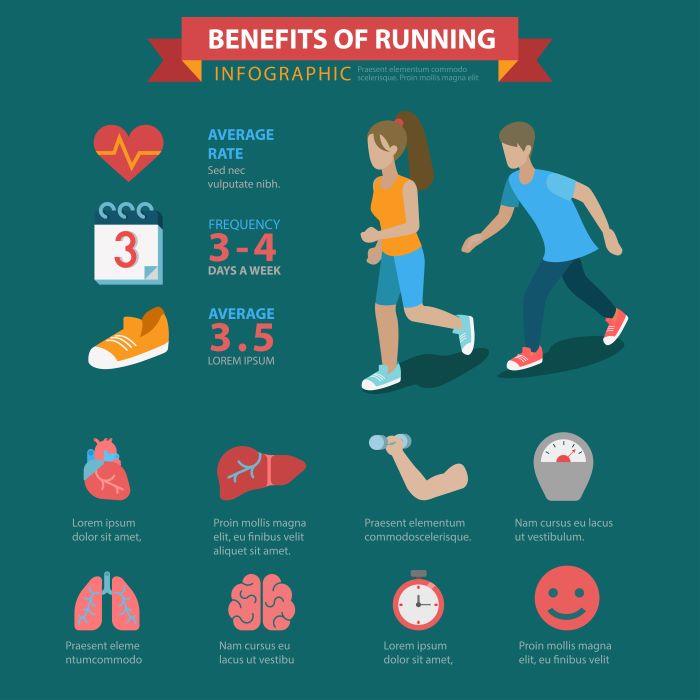When it comes to enhancing your fitness journey, few activities rival the effectiveness of running and cycling. Both sports offer unique benefits that cater to a variety of fitness levels and goals. If you’re wondering what’s better for fitness: running or cycling, it’s essential to understand how each activity can transform your health and well-being.
Running is a high-impact exercise that builds endurance, strengthens bones, and torches calories rapidly. It engages multiple muscle groups, particularly in the legs and core, while also enhancing cardiovascular health. Additionally, running can be performed almost anywhere, making it a flexible choice for those with busy schedules.
On the other hand, cycling is a low-impact alternative that allows individuals to enjoy an effective cardiovascular workout without placing undue stress on the joints. This makes it an excellent option for those recovering from injuries or looking to maintain a long-term fitness regimen. Cycling not only strengthens the lower body but also improves stamina and boosts mental wellness through outdoor rides.
To explore tailored workouts that fit your personal style and preferences, visit our website to learn more and get started today! Click here.
Health Benefits of Running for Overall Fitness

Running is often celebrated not only for its accessibility but also for its myriad health benefits. Engaging in regular running sessions can significantly improve your overall fitness and well-being.
One of the most notable benefits of running is its ability to enhance cardiovascular health. By increasing your heart rate, running strengthens the heart muscle, leading to improved circulation and reduced risk of heart disease. Moreover, it helps in lowering blood pressure and maintaining healthy cholesterol levels.
In addition to cardiovascular benefits, running serves as an effective tool for weight management. The high calorie burn associated with running makes it a powerful ally for those looking to lose or maintain weight. Depending on intensity and duration, runners can burn anywhere from 600 to 1,200 calories per hour.
Furthermore, running boosts mental health. The release of endorphins during a run can lead to improved mood and reduced symptoms of anxiety and depression. This phenomenon, often referred to as the “runner’s high,” is a great motivator for individuals seeking a natural way to enhance their mental well-being.
Lastly, regular running can strengthen bones and muscles, helping to prevent osteoporosis and frailty as one ages. It increases bone density, making bones stronger and less prone to fractures, which is especially important for older adults.
Health Benefits of Cycling for Overall Fitness

Cycling is more than just a leisurely activity; it provides numerous health benefits that can significantly enhance overall fitness. Whether you’re commuting to work or enjoying a scenic ride, cycling can be an enjoyable way to improve your physical health.
One of the primary advantages of cycling is its low-impact nature. Unlike running, cycling places less stress on the joints, making it an excellent option for individuals with joint issues or those recovering from injuries. This low-impact exercise allows for longer workout sessions without the same risk of injury that can occur with high-impact activities.
Cycling is also a fantastic cardiovascular workout. It helps improve heart and lung function, which can lead to better stamina and endurance over time. Regular cycling can lower the risk of cardiovascular diseases by enhancing blood circulation and reducing blood pressure.
In addition to cardiovascular benefits, cycling is effective for weight management. It can burn a significant number of calories, aiding in fat loss and muscle toning. Depending on the intensity, cyclists can burn between 400 to 1,000 calories per hour, making it a great choice for those looking to shed pounds or maintain a healthy weight.
Moreover, cycling promotes mental clarity and reduces stress levels. The rhythmic motion of pedaling, combined with the fresh air and scenic views, can create a meditative experience that helps clear the mind and elevate mood. This can be particularly beneficial for those struggling with anxiety or depression.
Finally, regular cycling strengthens leg muscles and improves overall flexibility. It engages various muscle groups, including the quadriceps, hamstrings, and calves, leading to improved muscle tone and strength.
Comparing Caloric Burn: Running vs Cycling

When it comes to achieving fitness goals, understanding the caloric burn of different activities is crucial. Both running and cycling are excellent forms of cardiovascular exercise, but they vary significantly in the number of calories burned during a workout. This comparison can help individuals choose the right activity for their fitness regimen.
On average, running burns more calories per minute than cycling. A person weighing around 155 pounds can burn approximately 298 calories by running at a pace of 5 miles per hour for 30 minutes. In contrast, the same individual cycling at a moderate pace of about 12-14 miles per hour would burn around 240 calories in the same duration.
However, the caloric burn can fluctuate based on several factors, including:
- Intensity: Higher intensity workouts lead to greater caloric expenditure. Sprinting or running uphill significantly increases the number of calories burned compared to a leisurely jog.
- Duration: Longer workout sessions naturally result in more calories burned. If you can sustain a longer cycling session, the total caloric burn can rival that of a shorter, more intense running session.
- Body Weight: Heavier individuals will generally burn more calories than lighter individuals during both activities due to the increased energy required to move their body weight.
While running may initially appear to have an edge in terms of caloric burn, cycling has its advantages, particularly for those looking for a sustainable workout over longer periods. Additionally, cycling allows for recovery and can be a more enjoyable option for those who may find running too strenuous.
Ultimately, the choice between running and cycling should align with personal preferences, fitness goals, and physical condition. Both activities offer fantastic opportunities for caloric burn and cardiovascular fitness.
Impact on Joint Health: Running and Cycling
When choosing an exercise regimen, especially one that involves high-impact activities, it’s vital to consider the impact on joint health. Both running and cycling present unique advantages and challenges regarding joint stress and overall musculoskeletal health.
Running is often seen as a high-impact exercise that can place significant stress on the knees, hips, and ankles. This stress can lead to a higher risk of injuries such as runner’s knee, shin splints, and stress fractures, particularly if proper form is not maintained or if appropriate footwear is not used. However, running can also strengthen the muscles surrounding the joints, potentially offering protection against injury in the long run.
On the other hand, cycling is generally considered a low-impact activity, making it more joint-friendly. The seated position helps to reduce stress on the lower body joints, allowing individuals with existing joint issues or those recovering from injury to engage in exercise without excessive strain. Cycling promotes joint mobility and can be a rehabilitation tool for those with knee or hip problems.
Importantly, each individual’s experience will vary based on:
- Personal Health: Pre-existing conditions, such as arthritis, can influence how each exercise affects joint health.
- Technique: Proper form during both running and cycling is essential to minimize injury risks.
- Equipment: Quality running shoes or a properly fitted bike can significantly impact comfort and joint stress.
Ultimately, the choice between running and cycling should factor in your unique health status and fitness goals. Striking a balance between both activities might even provide the best of both worlds, allowing for a comprehensive fitness routine while prioritizing joint health.
Choosing the Right Activity for Your Fitness Goals

When it comes to achieving your fitness goals, determining the right activity can be pivotal. Both running and cycling offer unique benefits, and understanding how each aligns with your personal objectives is crucial.
If your primary goal is to lose weight, both activities can be effective. Running generally burns more calories per minute due to its higher intensity, making it a strong contender for quick weight loss. However, cycling can also contribute significantly to calorie burn, especially during high-intensity interval training.
For those focused on building endurance, cycling might be the better choice. Long rides can significantly improve cardiovascular endurance without the same risk of injury that long-distance running can pose. On the other hand, consistent running can enhance stamina and is excellent for those aiming to increase their overall fitness level.
If your goal is to improve muscle tone, both activities have their merits. Running targets the legs and core, while cycling can also engage the glutes and quadriceps effectively. Incorporating strength training alongside either activity can offer a balanced approach.
Additionally, consider your lifestyle, preferences, and any physical limitations. Enjoyment is key in maintaining consistency in your fitness journey. If you love the outdoors and the thrill of trails, running might be your go-to. Conversely, if you prefer a more controlled environment, cycling could suit you better.
Ultimately, it’s about finding what resonates with you. Visit our website to learn more and get started today! Click here.


